JEFF SCHOGOL
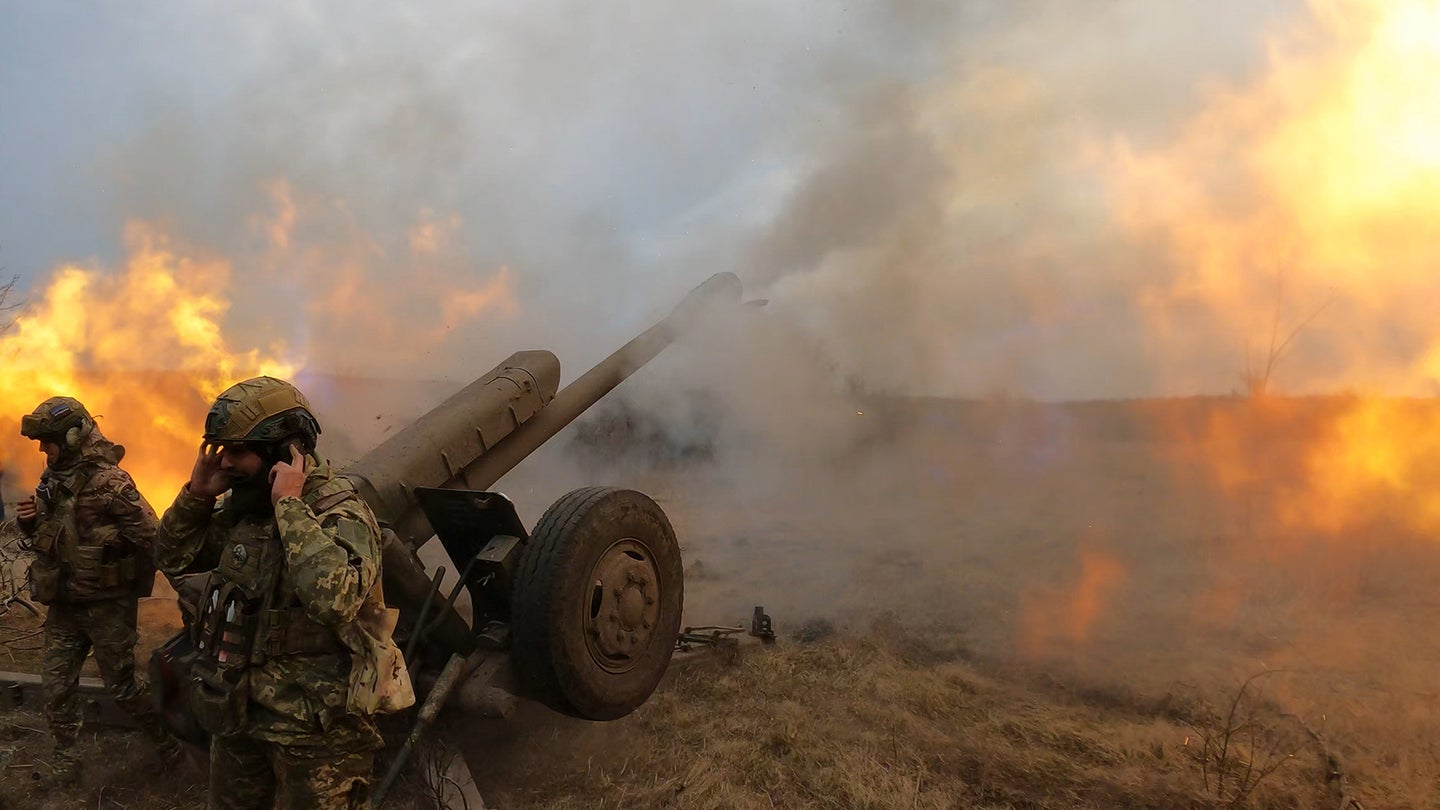
When President Joe Biden traveled to Kyiv on Feb. 20, he told Ukrainian President Volodymyr Zelensky that he could count on continuing support from the United States.
“You remind us that freedom is priceless; it’s worth fighting for for as long as it takes,” Biden told Zelensky at the end of a joint statement from the two leaders. “And that’s how long we’re going to be with you, Mr. President: for as long as it takes.”
However, several national security experts said they believe the Biden administration has yet to clearly state what its strategic objectives in Ukraine are. They say it’s not clear whether the United States supports Ukraine expelling all Russian forces from its territory – Ukraine’s stated objective – or if it would settle for a negotiated peace that falls short of a total Ukrainian victory.
This type of ambiguity has plagued the United States as it has tried to wage war in Iraq, Afghanistan, Syria, and elsewhere
For most of the 21st century, the United States has lacked effective policies or strategies to win conflicts, giving rise to the Forever Wars, best described by retired Army Gen. Stanley McChrystal’s 2018 advice to then-Secretary of State Mike Pompeo that a small number of U.S. troops should “muddle along” in Afghanistan.
Retired Air Force Gen. Philip Breedlove, who led NATO and U.S. European Command from 2013 to 2016, said the United States does not have a policy that supports Ukraine defeating Russia on the battlefield.
“We keep saying, ‘We’re going to give them everything it takes,’ – everything it takes to do what?” Breedlove told Task & Purpose. “We’re going to be there as long as it takes – as long as it takes to do what? As a military commander, if someone gave me those as directives, I would have no idea what they were asking me to do.”
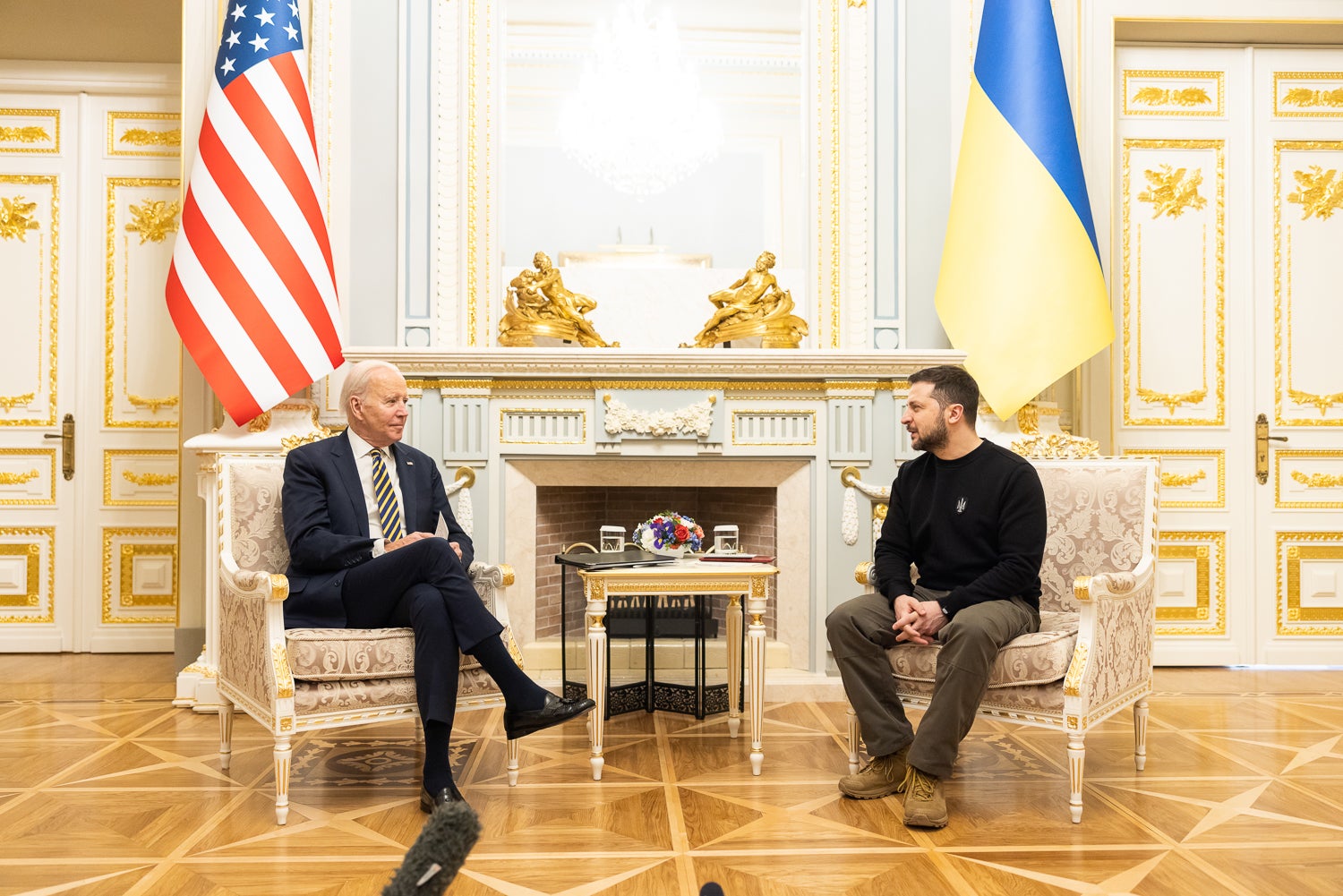 In this handout photo issued by the Ukrainian Presidential Press Office, U.S. President Joe Biden meets with Ukrainian President Volodymyr Zelensky at the Ukrainian presidential palace on February 20, 2023 in Kyiv, Ukraine. The US President made his first visit to Kyiv since Russia’s large-scale invasion last February 24. (Photo by Ukrainian Presidential Press Office via Getty Images)
In this handout photo issued by the Ukrainian Presidential Press Office, U.S. President Joe Biden meets with Ukrainian President Volodymyr Zelensky at the Ukrainian presidential palace on February 20, 2023 in Kyiv, Ukraine. The US President made his first visit to Kyiv since Russia’s large-scale invasion last February 24. (Photo by Ukrainian Presidential Press Office via Getty Images)The U.S. government needs to make clear that its policy is to provide Ukraine with the resources it needs to drive the Russians from all its territory, including Crimea, however long that takes, Breedlove said.
Having a clear U.S. policy on Ukraine will determine how long the war will last, he said. The Ukrainians have already proven that if they are properly equipped, they can defeat the Russians, as they did outside Kyiv at the onset of the war and elsewhere in the country since.
“How this fight proceeds is 100% reliant on Western policy and whether the United States leads Western policy,” Breedlove said. “If we choose to give them what they need to win, they will win, and this will not be a protracted war. If we choose not to give them what they need to win, which is our current track, then this might turn into a protracted war.”
The Biden administration deserves credit for holding the alliance of countries supporting Ukraine together and earning bipartisan support in Congress to provide military assistance for Ukraine, said retired Army Lt. Gen. Ben Hodges, former commander of U.S. Army Europe. But “they have stopped short of declaring what’s this all about in a clear, concrete way.”
“I don’t why they can’t say: ‘We want Ukraine to win; our goal is for Ukraine to win, and here’s what that means, and here’s why it’s important to the United States,’” Hodges told Task & Purpose.
Because the U.S. government has not clearly stated that it supports a Ukrainian victory over the Russians, leaders in the Kremlin still have hope that the United States and other countries will eventually lose the will to continue helping Ukraine, Hodges said.
Since Russia launched its latest invasion of Ukraine last February, the United States has provided Ukrainians with more than $32.5 billion in military assistance, said Marine Lt. Col. Garron Garn, a spokesman for the Defense Department.
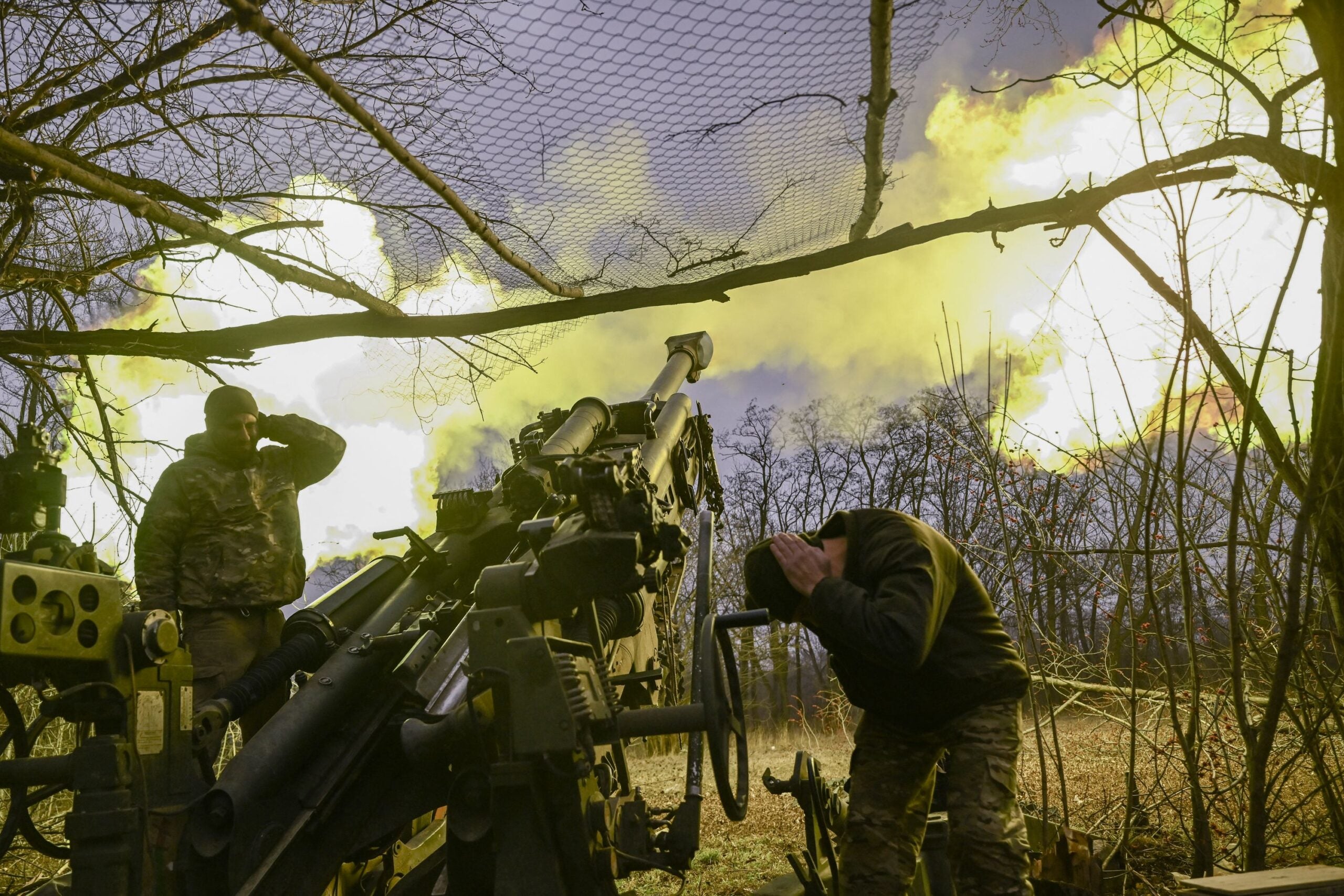 Ukrainian servicemen fire a M777 howitzer at Russian positions near Bakhmut, eastern Ukraine, on March 17, 2023, amid the Russian invasion of Ukraine. (Photo by Aris Messinis / AFP) (Photo by ARIS MESSINIS/AFP via Getty Images)
Ukrainian servicemen fire a M777 howitzer at Russian positions near Bakhmut, eastern Ukraine, on March 17, 2023, amid the Russian invasion of Ukraine. (Photo by Aris Messinis / AFP) (Photo by ARIS MESSINIS/AFP via Getty Images)The U.S. government’s strategy has been to work with Ukraine and other countries to deliver the Ukrainians’ most urgent security assistance needs, including artillery, armored vehicles, air defense, and ammunition, Garn told Task & Purpose.
“Ultimately, Ukraine will determine what victory looks like,” Garn said in a statement. “Our job is to keep supporting Ukraine on the battlefield so they are in the best position at the negotiating table whenever that happens. DoD] is also committed to supporting Ukraine’s medium- to long-term capability needs to ensure it has the capacity to defend itself and deter future Russian aggression. As President Biden has said, the U.S. will stand by Ukraine in their fight for freedom for as long as it takes.”
Most recently, the Pentagon announced that it is accelerating the delivery of M1 Abrams tanks to Ukraine by giving the Ukrainians older M1A1s rather than M1A2s. The 31 tanks are expected to arrive in Ukraine by the fall, Air Force Brig. Gen. Patrick Ryder, a Pentagon spokesman, told reporters on Tuesday.
The U.S. military is also confident that it will deliver a Patriot missile battery to Ukraine “on an expedited timeline,” said Ryder, who declined to say exactly when the Patriot system might arrive in Ukraine.
Yet the U.S. government has refused to provide Ukrainians with some of the weapons systems they’ve asked for, such as Army Tactical Missile System rockets, or ATACMS, which have a range of up to 186 miles. Biden made clear in May that the U.S. government will not give Ukraine missiles that are able to hit targets inside Russa. He also said “No” when asked in January if the United States would give Ukraine F-16 fighters.
Ever since Russia annexed Crimea in 2014, the U.S. government has been stuck in a cycle of initially refusing to provide weapons to Ukraine, only to reverse course after months of internal debates, by which time any opportunity to make a real difference on the battlefield has passed, said George Barros, a Russia analyst with the Institute for the Study of War think tank in Washington, D.C.
“We have our standard policy objectives, which is good; however, I’ll be perfectly honest, I am not convinced that the United States clearly has a strategy to achieve said goal,” Barros told Task & Purpose. “We have an approach; and that approach has been to send Ukraine a weapons system short, a day late. And so, we’ve always been playing catchup, and it’s not indicative of there being a real sound strategy.”
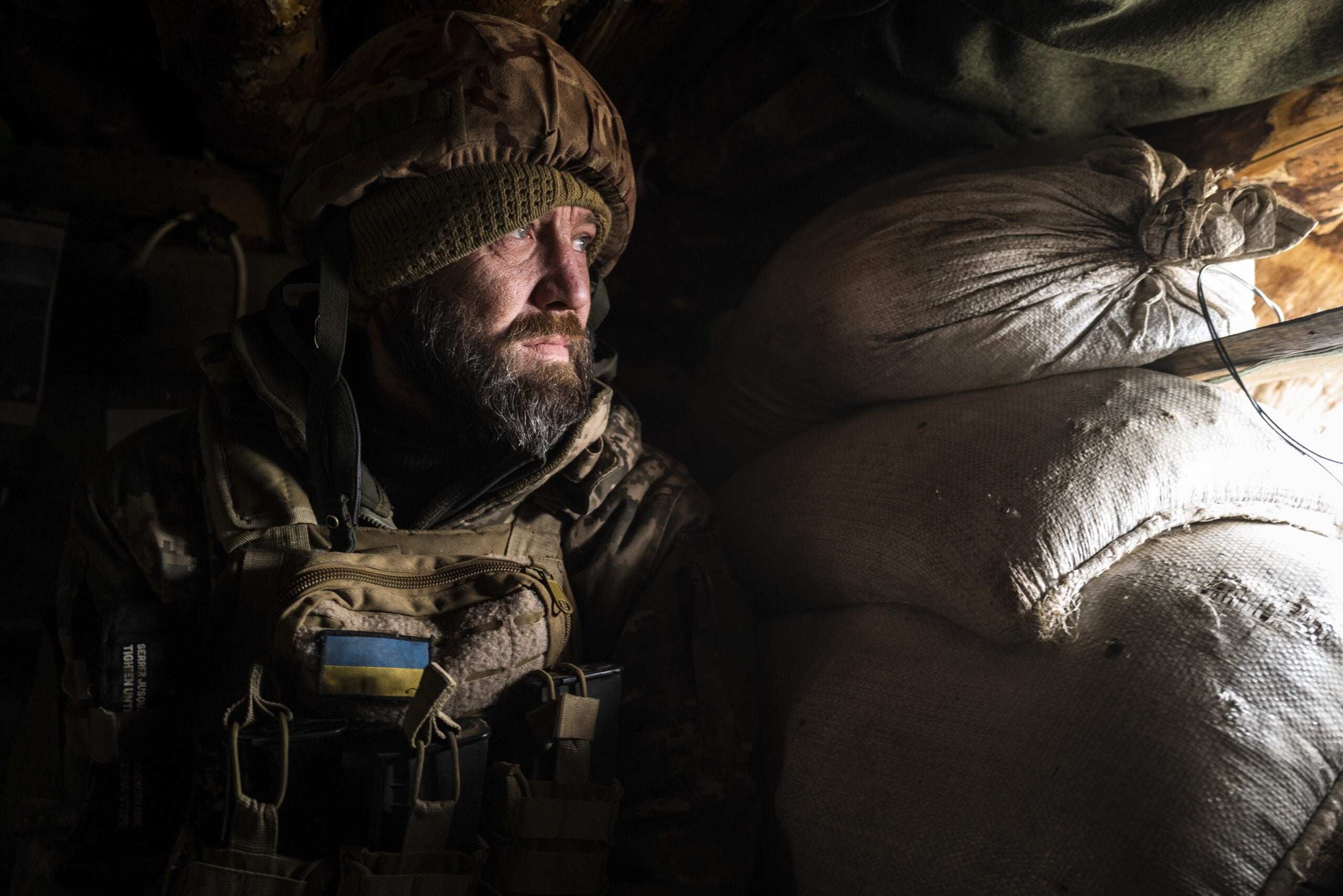 Ukrainian servicemen are seen along the frontline south of Bakhmut, Ukraine on March 20, 2023. (Photo by Wolfgang Schwan/Anadolu Agency via Getty Images)
Ukrainian servicemen are seen along the frontline south of Bakhmut, Ukraine on March 20, 2023. (Photo by Wolfgang Schwan/Anadolu Agency via Getty Images)Successive U.S. presidential administrations have been hesitant to provide weapons to Ukraine due to the fear of crossing Russian red lines that could lead to a nuclear war, Barros said. That fear continues to hamper the ability of the United States and other Western countries from coming up with a coherent Ukraine strategy.
It took several years before the U.S. government agreed to give Ukraine Javelin anti-tank missiles and allowed the Ukrainians to deploy them to units on the front lines, he said. U.S. officials also initially refused to provide Ukraine with main battle tanks before relenting in January, and now the Biden administration is resisting calls to give Ukraine fixed-wing aircraft.
“The unfortunate reality is that I think we likely are eventually going to send Ukraine fixed-wing aircraft after more months of debate, but this charade is very frustrating because the Ukrainians could be employing these systems – which we will likely ultimately give them, all patterns of the existing decision-making holding true – but the problem is that the current window of opportunity to exploit all of Russia’s failures so far in the war is closing,” Barros said.
However, Barros said he is hopeful that the United States and other Western allies are finally becoming less intimidated by Russian threats of escalating the war when deciding which weapons to provide Ukraine.
But the U.S. government’s support for Ukraine is also becoming a domestic political issue as some politicians argue that supporting Ukraine is not in America’s national security interest, said retired Navy Capt. Steven Horrell, of the Center for European Policy Analysis think tank in Washington, D.C.
“If we were to say, ‘We will do whatever it takes for Ukraine to win’ – boom; all of a sudden, you’re in a vulnerable spot domestically, because what’s that going to take?” said Horrell, a former naval intelligence officer.
Horrell also noted that U.S. officials often talk about defending Ukraine instead of helping the Ukrainians win. That could indicate that the Biden administration has not yet decided if U.S. policy is to help Ukraine win or achieve a negotiated peace.
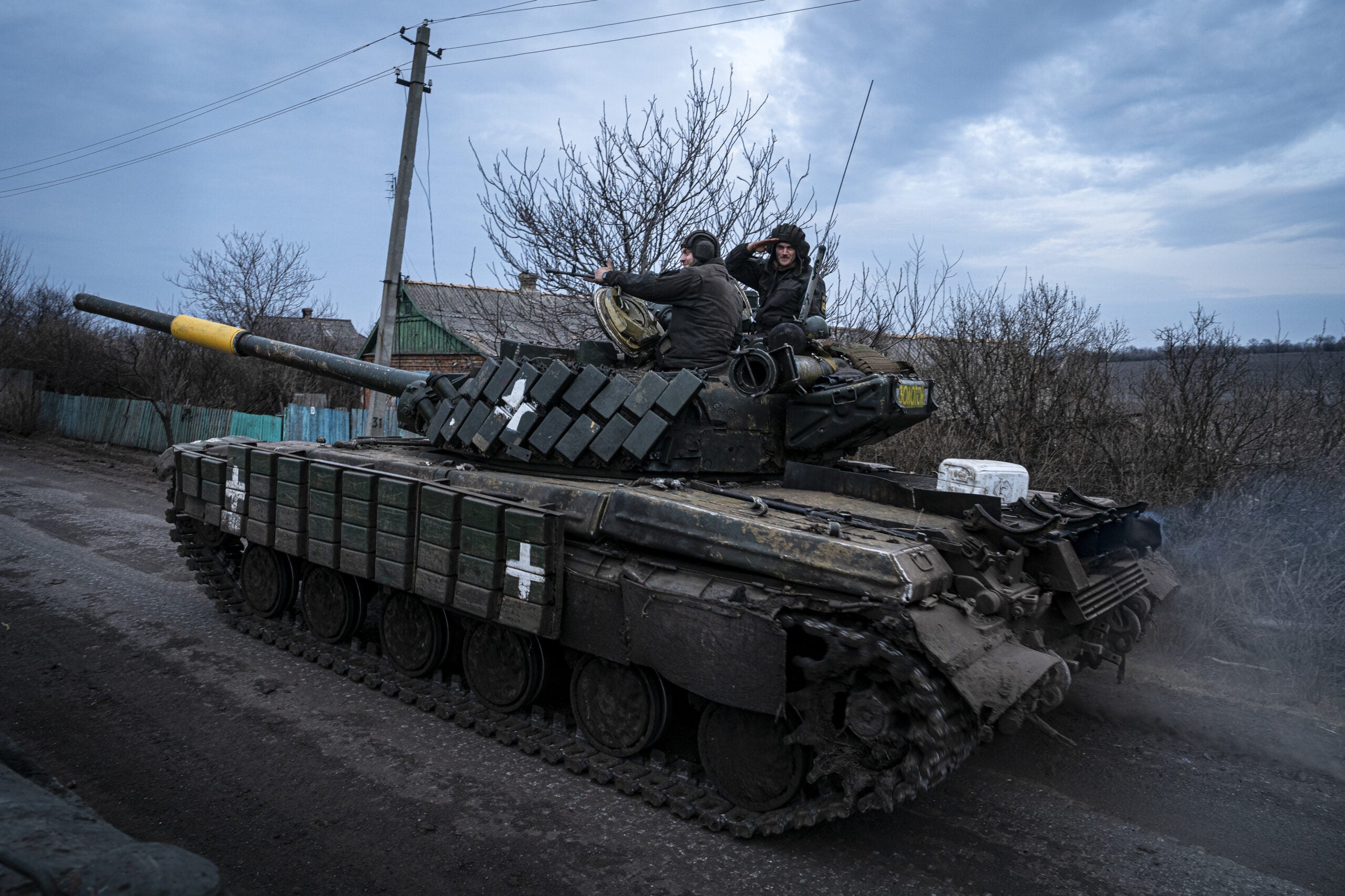 Ukrainian servicemen from the Special Operations Forces (OPFOR) 214 Brigade ride a tank along the frontline north of Bakhmut, Ukraine on March 15, 2023. As the fight for Bakhmut continues, the Ukrainian government has send reinforcements in order to hold the city against the Russian forces. (Photo by Ignacio Marin/Anadolu Agency via Getty Images)
Ukrainian servicemen from the Special Operations Forces (OPFOR) 214 Brigade ride a tank along the frontline north of Bakhmut, Ukraine on March 15, 2023. As the fight for Bakhmut continues, the Ukrainian government has send reinforcements in order to hold the city against the Russian forces. (Photo by Ignacio Marin/Anadolu Agency via Getty Images)“If there is a legitimate ceasefire, that will stop Ukrainian civilians from being bombed in their apartments by Russian hypersonic missiles,” Horrell. “So, there’s a benefit to that and I think there probably is an undercurrent of not wanting to take that possibility off the table.”
Horrell added that Zelensky has said several times that any peace agreement would have to involve Russian forces leaving all Ukrainian territory.
A National Security Council official told Task & Purpose that the United States will not dictate to Ukraine what a negotiated settlement with Russia must look like and that the Ukrainians will determine their own military strategy.
The U.S. government supports Ukraine’s right to defend its sovereign territory and internationally recognized borders, the NSC official said.
It is possible for the United States to help Ukraine reclaim its territory without framing the issue in terms of defeating Russia, said Evelyn Farkas who served as deputy assistant secretary of defense for Russia, Ukraine, and Eurasia from 2012 to 2015.
“I don’t think it’s our objective to ‘defeat’ Russia,” Farkas told Task & Purpose. “I think our government is correct not to state it in those terms because Russia can withdraw from Ukraine voluntarily any day, and that’s not necessarily a defeat for Russia. It certainly means that [Russian President Vladimir] Putin’s aggressive, international law-breaking, human rights-abusing foreign policy has failed, but it’s not a defeat for the country of Russia.”
The U.S. government has made clear that it defends Ukraine’s sovereignty, said Farkas, who is currently executive director of the McCain Institute, a think tank in Washington, D.C., that is part of Arizona State University.
Restoring Ukraine’s full sovereignty would involve the Ukrainian government having control of all its territory and people without any foreign political, military, or economic interference, she said. The United States helped to restore Kuwait’s sovereignty after it was invaded and occupied by Iraq in 1990.
Farkas said she believes it is more appropriate for U.S. government officials to define America’s goals as restoring Ukrainian sovereignty rather than helping Ukraine win the war.
“I don’t think we should be talking in terms of winning and losing,” Farkas said. “We should be talking in terms of very clear objectives. What is winning and what is losing? Nobody knows how to define that. What we should define is the end state. The end state is that the Ukrainian government controls its legal territory and the political systems and economic systems on that territory – period. Victory and loss, those are just not terms that describe anything. You can ascribe whatever you want to those terms.”
No comments:
Post a Comment